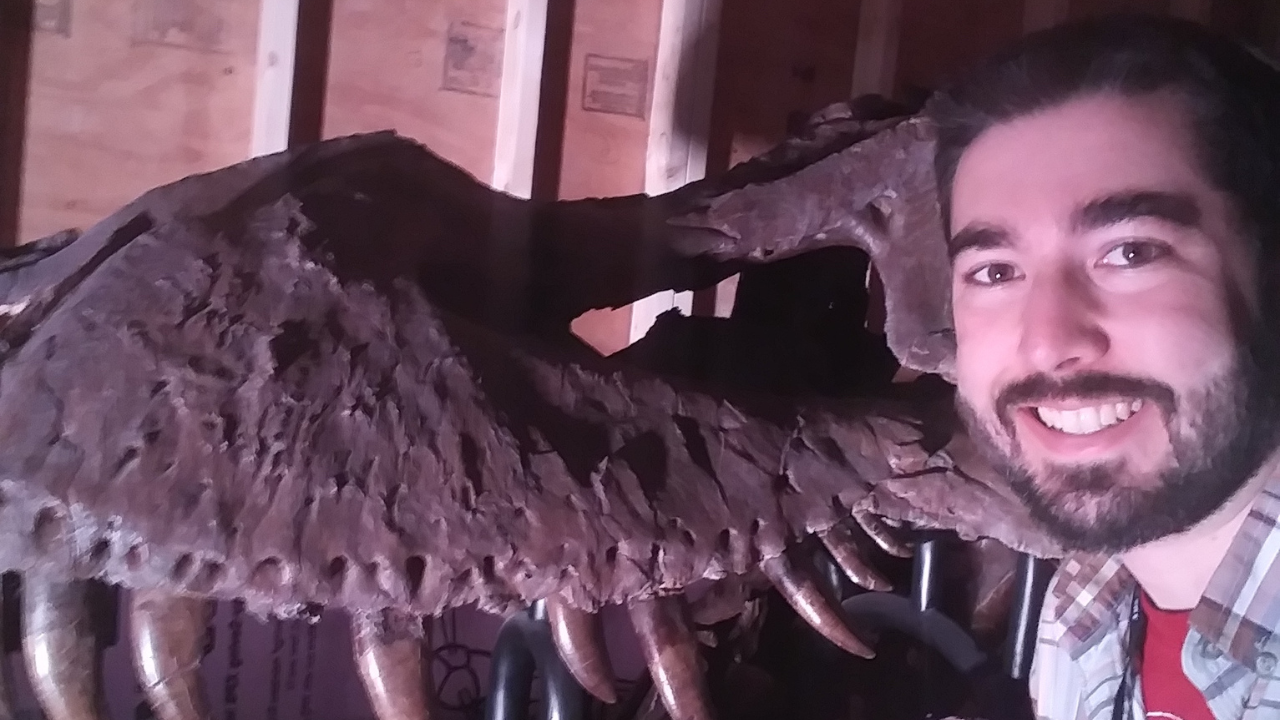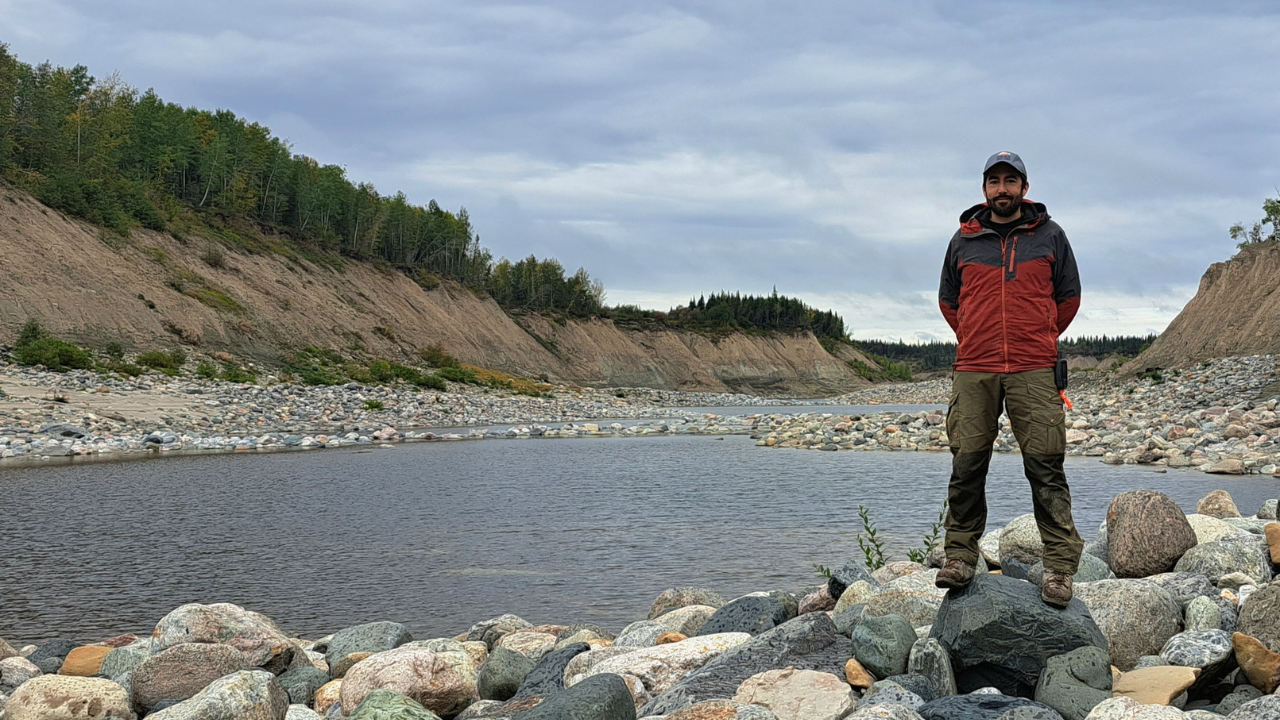content body
As Earth continues to undergo environmental shifts, scientists are racing to understand how ecosystems might respond to major changes in temperature and atmospheric conditions.
Thomas Cullen, an assistant professor in Auburn University’s Department of Geosciences in the College of Sciences and Mathematics, is helping lead a $3 million international research effort to study a prehistoric period of extreme warming known as the mid-Cretaceous Thermal Maximum. Funded by the National Science Foundation and South Africa’s National Research Foundation, the five-year project brings together a multidisciplinary team of scientists from both countries. By examining fossils, ancient sediments and climate data from nearly 100 million years ago, Cullen and his collaborators hope to uncover how life on Earth adapted — or collapsed — in response to intense planetary warming.

Auburn University paleontologist Thomas Cullen with the fossilized skull of a large theropod dinosaur.
“This period had very high temperatures and CO2 in the atmosphere, very high sea levels and massive changes in global circulation,” Cullen said. "In many ways, it’s the closest ancient analog we have to some of the more extreme projections of Earth’s future."
Cullen will lead Auburn’s role in the effort, with support for research, fieldwork and student involvement. His colleague in the Department of Geosciences, Assistant Professor Richard Vachula, will serve as co-investigator, focusing on ancient wildfire activity using microscopic charcoal records.
Cullen’s research focuses on how ecosystems shifted during this period of global temperature increase roughly 94.5 million years ago. The team will use fossil evidence, geochemical data — chemical clues preserved in ancient bones and teeth — and modeling approaches to study changes in biodiversity across two key regions: western North America and the Gobi Desert of Mongolia.
“What’s fascinating is that in North America, we see a major change in terrestrial ecosystems during this period,” Cullen said. “The dominant dinosaur groups disappear and are replaced by entirely new groups. But in Mongolia, the ecosystems seem to remain comparatively stable. We want to understand why.”
One possible explanation lies in geography. North America at the time was split by a shallow inland sea, creating coastal ecosystems that may have been more vulnerable to disruptions in marine life. Cullen explained that the research team suspects a cascade effect may have occurred. Changes in the ocean, including the loss of oxygen in deep waters, may have affected food webs on land.
“Today we are already seeing drops in ocean oxygen levels,” he said. “If those trends continue, could we see similar impacts in modern coastal ecosystems? That’s the kind of broader question we’re trying to answer in this investigation of more ancient systems.”
As part of that investigation, Cullen and his colleagues will conduct fieldwork in places like Utah and the Gobi Desert, collecting fossil samples and analyzing them for chemical clues. They will study the teeth and bones of long-extinct animals, reconstruct ancient diets and migration patterns, and model ecosystem shifts during periods of rapid warming.
“This work spans everything from traditional fossil hunting to cutting-edge geochemistry and computational modeling,” Cullen said. “It really takes a team.”
At Auburn, the project will also involve students in research and fieldwork, which Cullen hopes will help raise awareness of the broad career paths available in geosciences. These include opportunities in research, environmental consulting, climate modeling and other disciplines beyond the more well-known traditional geology careers.
“Most students don’t get exposed to geosciences after middle school, and there are a lot of misconceptions,” he said. “We want them to know this is a field where they can study a variety of real-world problems and go down many potential career paths.”
Because so few periods in Earth’s history resemble episodes of warming on this scale, Cullen said the project offers a rare opportunity to understand how past ecosystems responded to extreme conditions and what that could signal for the planet’s future.
“There’s a lot we can learn from the past,” he said. “And the time to learn it is now.”





